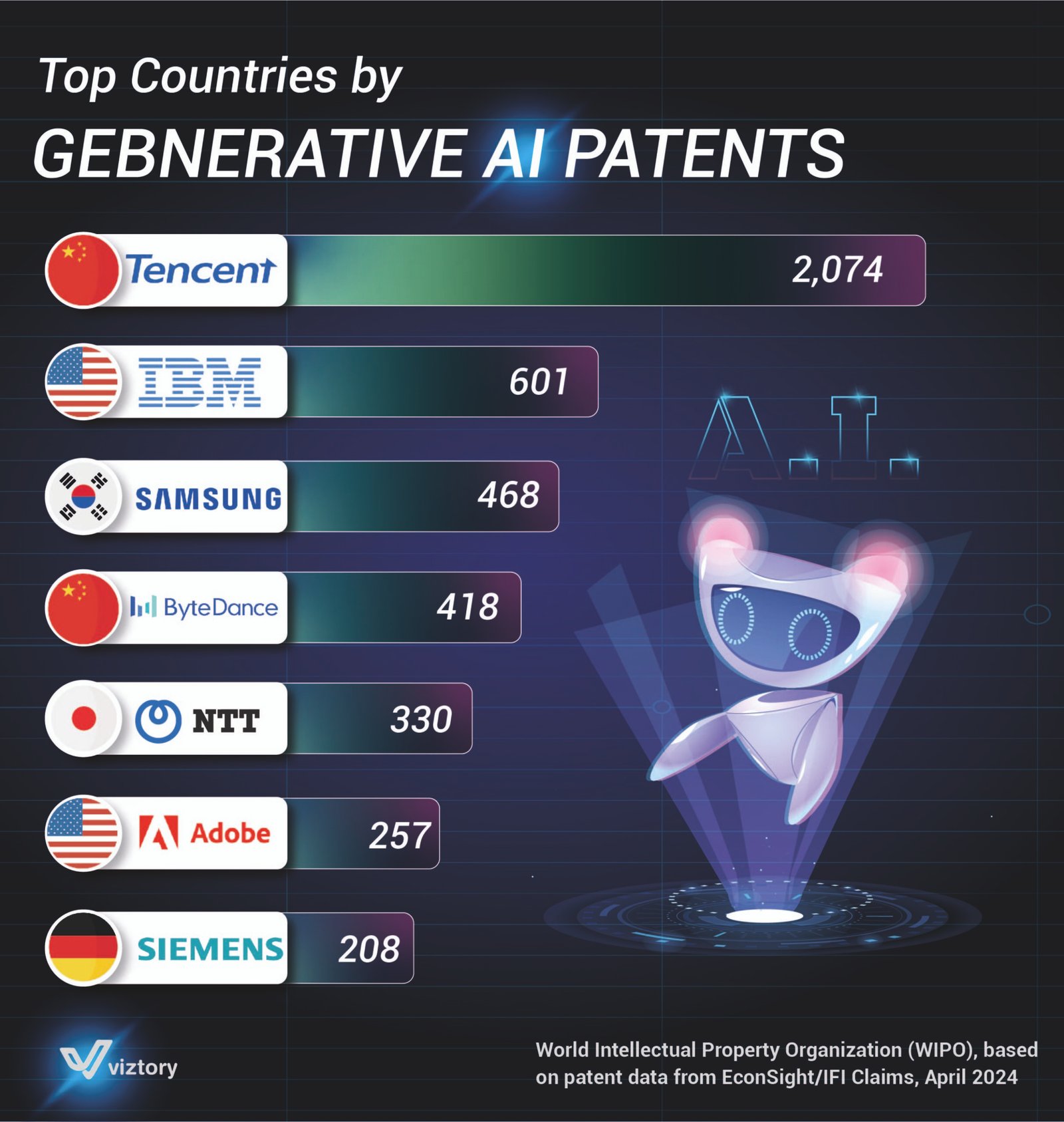Analysis of Generative AI Patents
-
Aug, Thu, 2024
Analysis of Generative AI Patents
Tencent:
Tencent, a Chinese company, leads the list with an impressive number of 2,074 patents. This significant figure reflects Tencent’s role as a leading force in developing AI technologies, particularly in applications related to social interaction, gaming, and digital advertising.
IBM:
IBM, an American company, ranks second with 601 patents. IBM is known for its ongoing efforts to develop AI and integrate it into various fields such as healthcare, cloud computing, and data analysis.
Samsung:
Samsung, a South Korean company, holds the third position with 468 patents. Samsung’s commitment to enhancing its AI capabilities, especially in electronics and smart devices, is evident.
ByteDance:
ByteDance, a Chinese company known for popular apps like TikTok, ranks fourth with 418 patents. These numbers reflect the company’s efforts in developing AI technologies for content personalization and data analysis.
NTT:
NTT, a Japanese company, has registered 330 patents, highlighting its significant role in developing AI technologies for telecommunications and smart networks.
Adobe:
Adobe, an American company, ranks sixth with 257 patents. Adobe focuses on utilizing AI to improve design tools and digital content.
Siemens:
In seventh place, Siemens, a German company, has registered 208 patents. Siemens focuses on using AI to enhance industrial and automated systems.
Technology and Its Impact on Global Competition
The geographic distribution of patents indicates strong competition among countries and companies in the field of AI. China, for instance, stands out as a key player thanks to the large number of patents registered by its companies like Tencent and ByteDance. On the other hand, the United States continues to maintain its position thanks to giant companies like IBM and Adobe, while South Korea, Japan, and Germany are striving to catch up through companies like Samsung, NTT, and Siemens.
This competition reflects not only the strength of innovation in AI but also the importance of generative technologies in shaping the future of various industries. These patents are expected to play a pivotal role in determining the leading companies and countries in the digital economy of the coming decades.
Conclusion
The developments in generative AI, as reflected by the patent numbers, point to a future filled with innovation and change. As this global competition continues, the world will witness unprecedented advancements in AI applications that will change the way we live and work.

